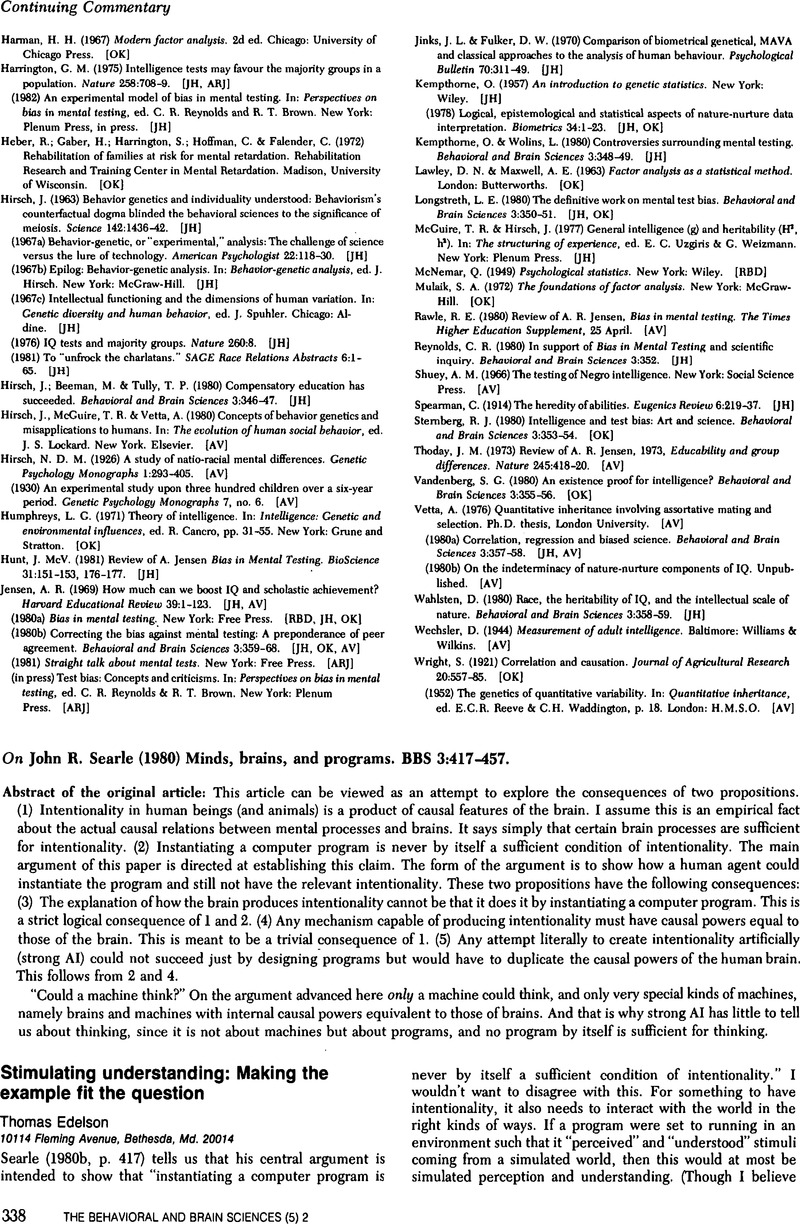Crossref Citations
This article has been cited by the following publications. This list is generated based on data provided by Crossref.
Maloney, J. Christopher
1987.
The right stuff.
Synthese,
Vol. 70,
Issue. 3,
p.
349.
HARNAD, STEVAN
1989.
Minds, machines and Searle.
Journal of Experimental & Theoretical Artificial Intelligence,
Vol. 1,
Issue. 1,
p.
5.
Harnad, Stevan
1991.
Other bodies, other minds: A machine incarnation of an old philosophical problem.
Minds and Machines,
Vol. 1,
Issue. 1,
p.
43.
Harvey, R.J.
1995.
Can computers think? Differences and similarities between computers and brains.
Progress in Neurobiology,
Vol. 45,
Issue. 2,
p.
99.
Marconi, Diego
1996.
Integration of Natural Language and Vision Processing.
p.
123.
Marconi, Diego
1996.
On the referential competence of some machines.
Artificial Intelligence Review,
Vol. 10,
Issue. 1-2,
p.
21.



